Today we’re going to take on the mighty task of comparing three of the latest wireless noise cancelling headphones that have arrived in the store - the Sony WH1000XM5, the Bowers and Wilkins PX7 S2, and the Sennheiser Momentum 4.
There’s quite a few differences between these models, but right off the top we can say that all three of these headphones are good. Which one you prefer is mostly going to come down to your preference in sound signature, and some other practical considerations.
So without further ado, let's go through the overall design of these headphones.
DESIGN: SONY WH1000XM5
We’ll start with the crowd favourite, the Sony WH-1000XM5. The XM5 is the latest model in a series of headphones that has become supremely popular for Sony. The design of the WH1000XM5 is a big departure from the previous models, with a much more anonymous, understated look. You may disagree, but personally I think it looks pretty nice.
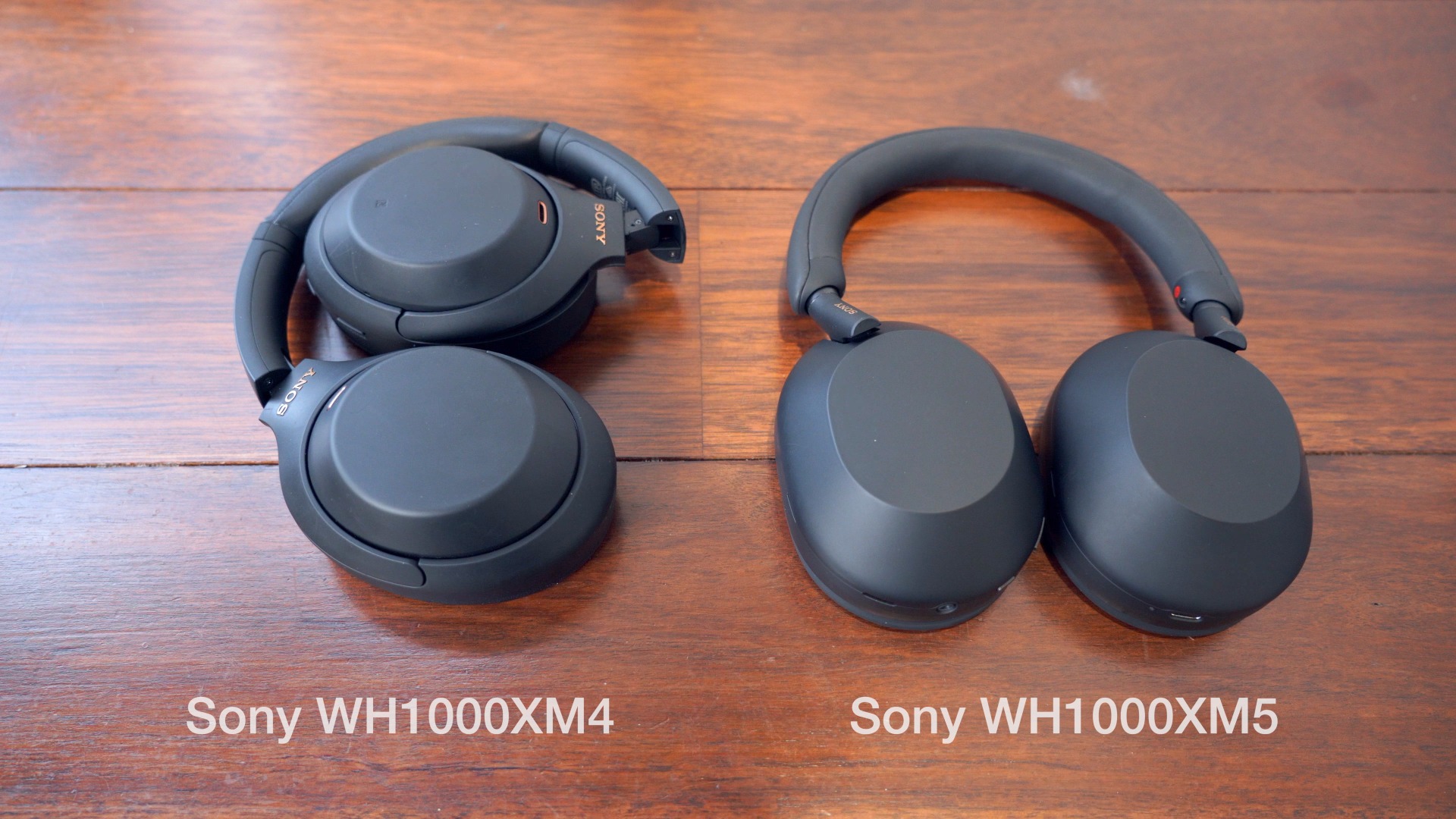
However, there is one disappointment with the new design that everyone seems to agree on: the new Sony XM5 no longer folds up like the previous generation XM4. To be fair, none of the headphones in this round up fold up like the XM4 either. If this is a critical factor, you’ll be happy to know that the Sony XM4 will still remain on the market alongside the XM5.
We found overall comfort to be good on the Sony because of the light weight, but I wish the new headband was just slightly thicker like the one on the XM4. Also, if you have big ears, you may find the earcups quite shallow, with a depth of around 20mm.
We aren’t really set up to scientifically test for noise cancelling performance here at Minidisc, but I will say the Sony seems to have the best combination of strong noise cancelling that still feels natural.
DESIGN: BOWERS & WILKINS PX7 S2
Moving onto the new Bowers & Wilkins PX7 S2, I think this model has seen the biggest improvement over its predecessor in terms of design.
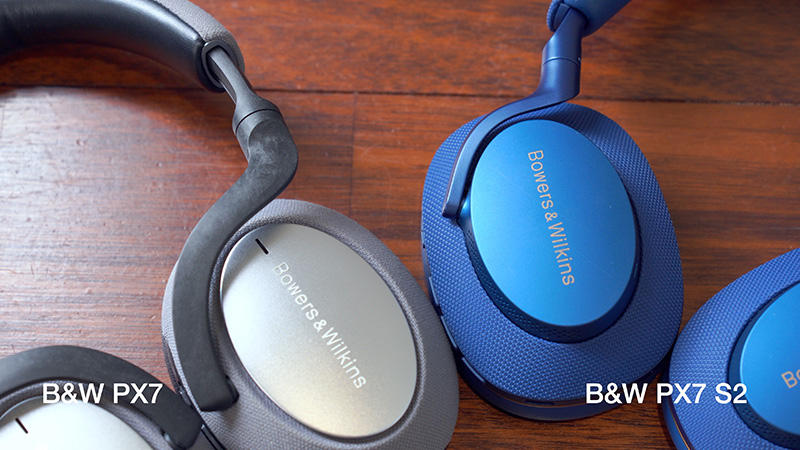
The Bowers & Wilkins PX7 S2 still has a premium feel like the previous PX7, but it’s now lighter and more comfortable. Personally I think the PX7 S2 is the only model out of these three headphones where the fit and finish of the unit matches the price, though the premium build is noticeably heavier.
Compared to the previous PX7, I find the PX7S2 easily more comfortable, with a better conforming headband. The earpads are a little bit stiffer than the competition, so you will notice a higher clamping force and weight on the B&W compared to the Sony and Sennheiser.
The PX7 S2 employs steeply angled drivers that are set deep in the cup for maximum soundstage width. The maximum depth of the earcup is close to 30mm, so for those of you with ears that stick out a fair bit, the PX7 S2 is a great choice.
The noise cancellation seems to be decent on the PX7 S2, but I find it creates a noticeable sensation of pressure that isn’t as natural as the Sony or the Sennheiser’s noise cancelling.
SENNHEISER MOMENTUM 4: DESIGN
The new Sennheiser Momentum 4 is the newest of these 3 models, and this headphone’s design is also a noticeable departure from the previous generations of Momentum.
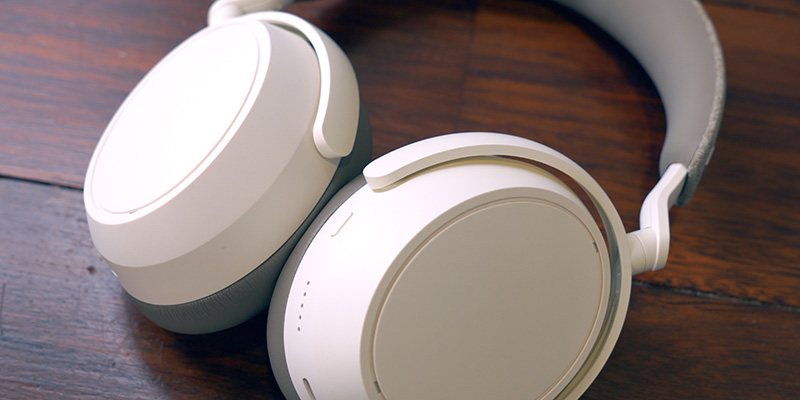
The design is now much more plain and anonymous. While the fabric texture on the headband is a classy touch, the bare plastic of the earcups is a bit uninspiring. Maybe the point was to make a headphone that wouldn’t call attention to itself on a Zoom call.
All that said, this new design is lightweight and comfortable, with roomy earcups and broad headband padding. The drivers are slightly angled, with a maximum depth of 25mm at their deepest point in the cup. The Sennheiser has the largest overall earcups out of these 3 models, and we think most people will find the Sennheiser to be the most comfortable choice.
Noise canceling performance is quite good, and feels quite natural. You can actually control the level of noise cancelling by pinching the touch panel of this headphone, which is a unique touch.
BATTERY LIFE AND CONNECTIVTY
Let’s talk about battery life.
One key advantage of the Momentum 4 over the other 2 headphones in this roundup is battery life: the Sennheiser claims the longest battery runtime by far, offering up to 60 hours of playback, which is twice as long as what Sony and Bowers advertise. If you want to go the longest time between charges, the Sennheiser is a standout choice.
On the other hand, the Bowers & Wilkins PX7 S2 will simply not produce sound if it is not charged, even when you use the included cables. So if you are often away from a charger for longer than 30 hours, the PX7S2 is not a great choice.
Connectivity wise, all three units support Bluetooth 5.2 and multipoint bluetooth, allowing you to connect to multiple devices at the same time, so that for instance, you can be connected to your laptop but hear incoming calls from your phone.
As far as codec support goes, the Sony supports AAC, SBC and LDAC codecs, while the Sennheiser and Bowers and Wilkins support AAC, AptX and the new AptX Adaptive codecs. Bowers & Wilkins additionally supports AptX HD.
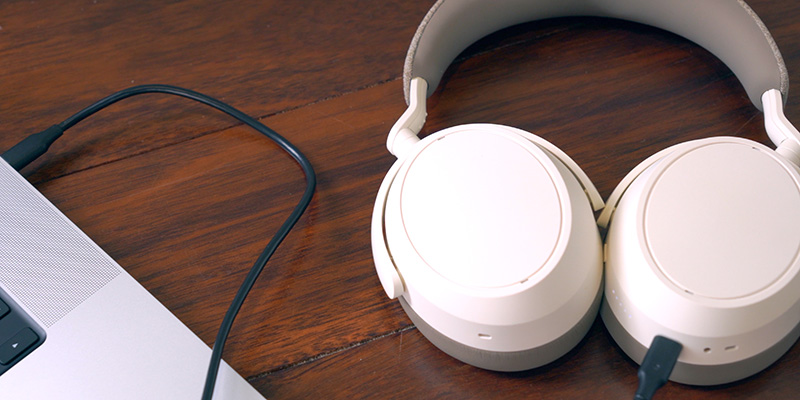
One thing we should note is that while all 3 of these headphones support a wired 3.5mm connection, only the Sennheiser and Bowers & Wilkins supports a USB-C digital connection which lets you use the internal DAC of the headphone. So if you want the highest quality, wired listening experience, it’s worth keeping this in mind.
Another quirk of the PX7S2 is that it uses the USB-C port for analogue audio input, and comes supplied with a special 3.5mm to USB-C cable. Again, even with this cable, the PX7 S2 will not function if it is not charged and turned on.
SOUND QUALITY: SONY WH1000XM5
Now let’s get into the nitty gritty of the sound of these headphones, starting with the Sony WH1000XM5. The new Sony features a revised 30mm driver compared to the 40mm on the WH1000XM4. I think the new driver delivers a clearer sound with less mid-bass thickness, and tighter bass response. Overall the headphone sounds more balanced. Vocals in particular come through cleaner with more texture.
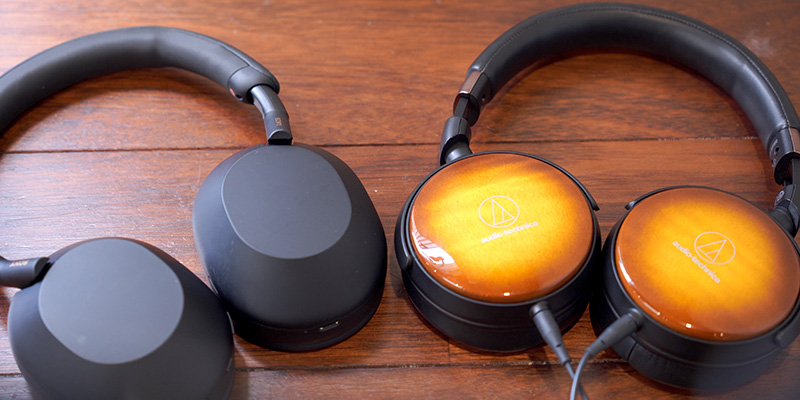
While this headphone doesn’t quite have the peakier upper midrange response of other Japanese headphone brands like Audio Technica and Fostex, it actually gets a little closer to that signature than previous Sony headphones.
Now I know that not everyone is going to love this brighter signature, as the thicker, more forgiving sound of the WH1000XM4 was really fun for aggressive electronic and pop music. I prefer the new tuning, and honestly I still think bass on the Sony is a touch lumpy and thumpy for critical listening.
Overall I think the Sony excels with genres with more synthetic instruments like modern studio pop, electronic and hip hop. On recordings with more real world acoustics, like classical or jazz recordings, the timbre of the sound is still a bit artificial.
SOUND QUALITY: SONY WH1000XM5
Moving onto the Bowers & Wilkins, I should say first that I was not a big fan of the previous Bowers and Wilkins PX7. Even though that headphone had an excellent soundstage, the tuning had a very sculpted midrange signature that made things sound wonky and congested to me.
I’m happy to report that with the new PX7 S2, things are much improved. The PX7 S2 preserves the impressive soundstage of the original model, and it refines the tuning so that while things still have a distinctive colouration, it’s done in a tasteful way.
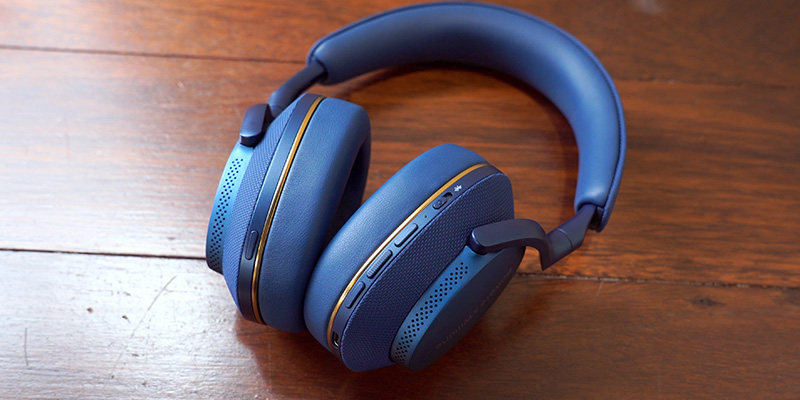
The core of the PX7 S2’s sound is a thick, chesty mid bass, a slight dip in upper midrange vocals, coupled with a little peak in the highs for detail. It seems deliberately tuned so that you get most of the meat of the bass and highs, and a sense of richness, without being fatiguing even on really aggressive recordings.
I don’t think this is the headphone to choose if you prefer a neutral, flat response, because the combination of thick mid bass and rolled off sub bass still makes this headphone sound somewhat congested, but it is a very forgiving signature for most genres with a charm of its own.
Once again soundstage is standout on this headphone thanks to the steeply angled drivers, which makes it a great choice for movies and live recordings.
We should also note that Bowers & WIlkins has announced a flagship PX8 model which shares the same basic design of the PX7 S2, but with an upgraded driver. The PX8 model will cost basically twice the price of the PX7 S2, so we’ll let you know more about the super premium version when we get it.
SOUND QUALITY: SENNHEISER MOMENTUM 4
Now we come to the Sennheiser Momentum 4, and I can plainly say this is my overall favourite out of the 3 in terms of sound.
The Sennheiser is interesting in that it sounds flat and natural from the highs all the way down to the mid range, and then it adds a really noticeable bass boost in the lows. Sennheiser has managed to sculpt this bass boot so that it sounds fast and punchy, rather than the thick and thumpy response of the Sony or Bowers and Wilkins. The boost still adds an obvious kick to most recordings, so it isn't what I would consider neutral.
The rest of the frequencies sound natural and accurate to me. The Momentum 4 has more forward high frequencies than the Bowers and Wilkins, but at the same time it sounds a little less emphasized in upper midrange vocals than the Sony. Sennheiser has emphasised the higher treble ranges which brings out that typically dry Sennheiser sound.
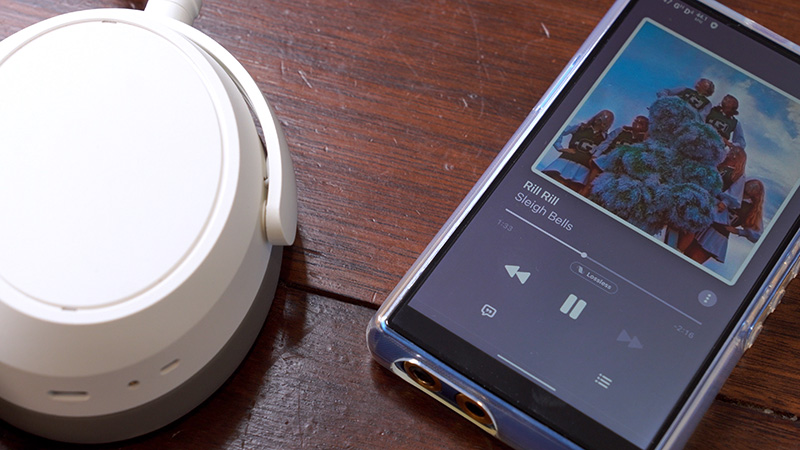
As a result the Sennheiser can sound a little bit unforgiving and edgy with a bad recording, but most of the time, it maintains a good balance between fun and detailed. I think the Sennheiser has the most natural and refined sound in this round up, while still giving you a bass response to smile about.
CONCLUSION
So there’s obviously a lot of factors to consider when choosing between these 3 headphones, and we haven’t covered all of them in this video. But truthfully, we have reached a point where this product category is quite mature and I don’t think there are any obvious flaws with any of these models.
I would say, pick the Sony if noise cancelling performance is critical and you listen to mostly modern genres of music. Pick the Bowers and Wilkins if you want something beautifully built with a forgiving sound, or if you ears stick out a lot. Meanwhile I think the Sennheiser is a great overall choice with great sound, with great battery life.
But if all of these sound like pretty good options to you, you may as well just pick the one you like the look of, since I don’t think you can go too wrong here.
Let us know what you think - drop in and have a listen!








